Day 01 Shiraz
Arrival in Shiraz around 2.30 am
Meet and assist by our representative and transfer to the hotel
Check in and installation and overnight at the hotel
In the morning, and after breakfast, departure for a city tour to visit the main highlights of the city: Nasir Al Molk Mosque (pink mosque), Citadel of Karimkhan Zand, Vakil complex (bath, mosque, bazaar), Narenjestan Qavam, Eram garden, Mausoleum of Hafiz.
Back and overnight at the hotel.

Shiraz, if drawn is a miniature and if described is a piece of poetry. Both in drawing and in poetry. Shiraz is replete with flowers and nightingales. Shiraz is known for its heavenly gardens, eloquent poets, pleasant weather, and easy-going people. It is the major city of Fars/Pars province with which Persian language, Persian Gulf, Persians and even the old name of Iran, i. e. Persia, are all associated. Shiraz is a vibrant city in the spring and in April and May the fragrance of citrus blossoms haunts the visitors, that is why May 5th is the day of Shiraz!
Nasir al-Mulk Mosque, as one of the most beautiful mosques in Iran, it was constructed in 1876 taking 12 years to be completed. Different designs, colors, and patterns have made the mosque inimitable expecially the uncommon application of pink color in its decoration together with the one-of-its-type tilework and mugharnas work, i. e. corbel.
Vakil Complex, Consisting of a Hammam, Mosque, and Bazaar together with Arg-e Karim khan Zand (a citadel) and Pars Museum. Vakil Complex mostly dates back to Zand dynasty – Karimkhan reign, 18th century – having spectacular architecture and almost inimitable structure. Eram Garden together with the building inside where built during the middle of 19th century by the paramount chief of the Qashqai tribes of Pars. The original qadripartite layout of the garden, like all Persian gardens, is known to be laid in the 18th century.
Tomb of Hafez or Mausoleum of Hafez known for poetry, Hafez, one of the greatest Iranian poets (1325 – 1389), is buried in a heavenly garden referred to as Hafezieh, in the heart of Shiraz. Due to the sophistication and complexity inherent in his poems, it was and still is, difficult to understand whether he was a pious mystic eulogizing divinity or a romantic poet lauding worldly love. The design and construction of the tomb was carried out by the French archeologist and architect, Andre Godard, in 1935.
Day 02 Shiraz / Persepolis / Naghsh – I – Rostam / Naghsh – I – Rajab
Breakfast at the hotel
Departure for a morning excursion to Persepolis then proceed to Naghsh – I – Rostam, after that Naghsh – I – Rajab.
Back to Shiraz and afternoon city tour visiting Mausoleum of Hafiz, Mausoleum of Sadi and Quran gate.
Back and overnight at the hotel.
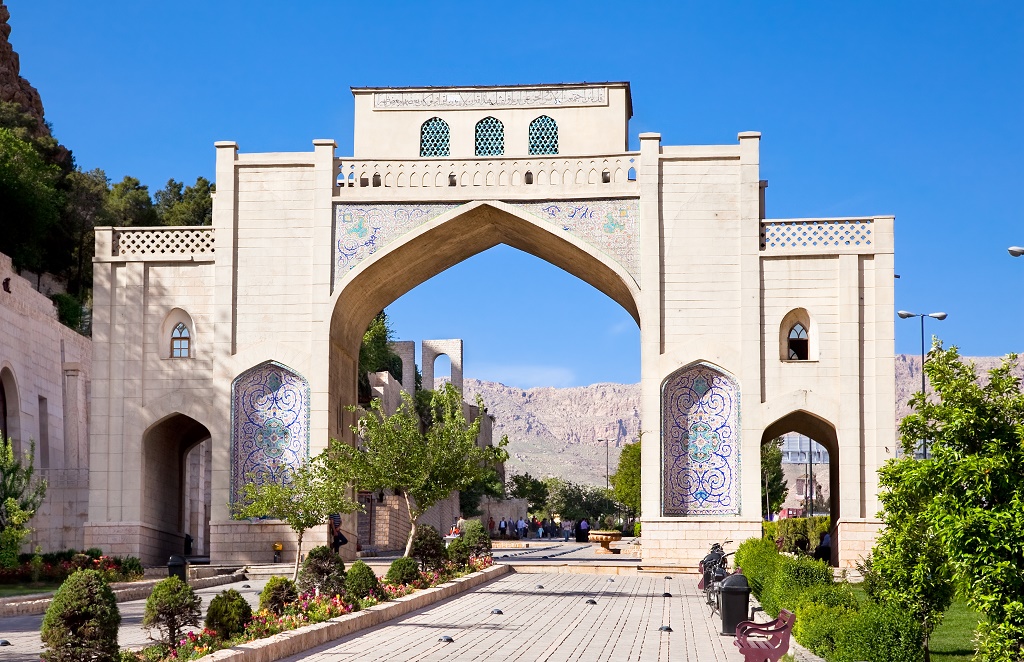
Persepolis, meaning „City of Parse”, was the ceremonial capital of Achaemenid Empire ruling the Middle East and territories beyond it from 550 to 330 BCE. The royal palace was to be a symbol of greatness, glory, and a center for various festivals and celebrations, especially Nowruz, i. e. New Year, and for receiving the envoys from other nations.
Day 03 Yazd / Abarkooh / Pasargadae
Breakfast at the hotel
Drive to Yazd with a short stop in Abarkooh to visit its ancient cedar tree. Then proceed to Yazd with a short stop in Pasargadae to visit the tomb of Cyrus the great. Arrival, check in and installation at your hotel in Yazd
Overnight at the hotel
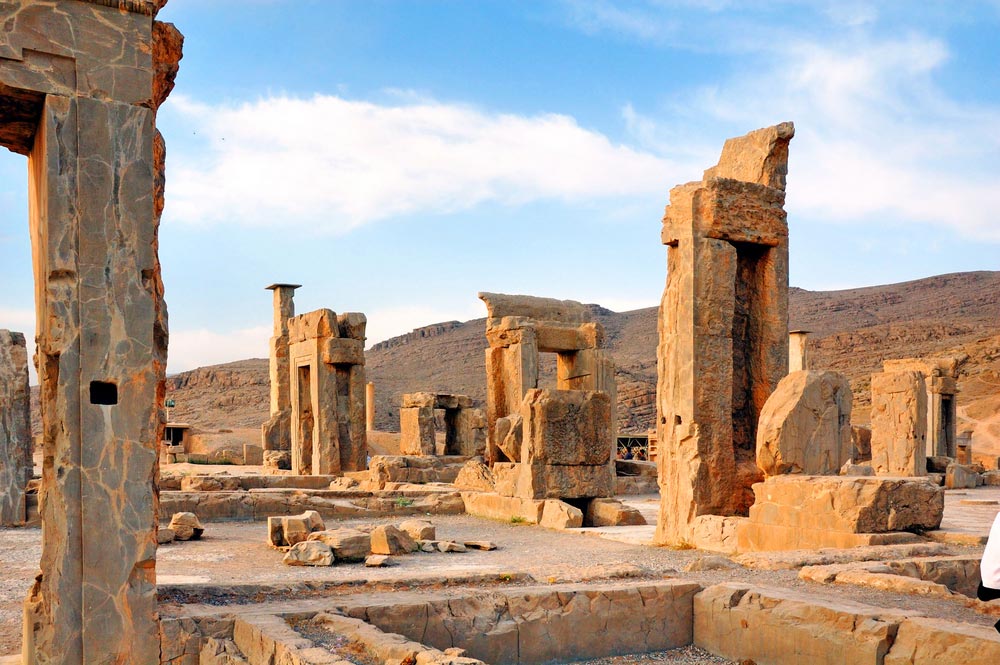
Pasargadae: Derived from the name of a major Persian tribe, meaning „the throne of Pars”, a splendid monument from Achaemenid Empire (330 – 550 BCE). Pasargadae is another testament to the magnificence of such ancient world power ordered to be built by Cyrus the Great (559 – 529 BCE), the founder of Achaemenid Dynasty. The rock tomb of Cyrus the Great is the significant monument remained in Pasargadae.
Yazd: Like thousands of liters of drinking water are concealed in the qanats (subterranean water channels) and out of people's sight, there are a lot of legends in the adobe-made old neighborhoods of the city waiting to be unearthed. The name of the city is associated with praying and supplication; that's why, for centuries, Zoroastrians and Muslims have been practicing their religion. In Iran's largest adobe-made city, wind-catchers, cellars, and water reservoirs of a large variety and number are readily observed. The sweet behavior of people of Yazd to the guests and their hospitality is akin to the sweet taste of the pastry baked there. Yazd, Isfahan, and Shiraz form the golden triangle of Iran's tourist attractions.
Day 04 Yazd
Breakfast at the hotel.
Full day city tour in Yazd: Dakhme (towers of silence), Zoroastrian fire temple, Yazd Jami mosque remaining from Ilkhanid dynasty with its amazing ceramics, Fahadan neighborhood (the old city), Amir Chakhmaq square and the Water supply.
Back and overnight at the hotel.
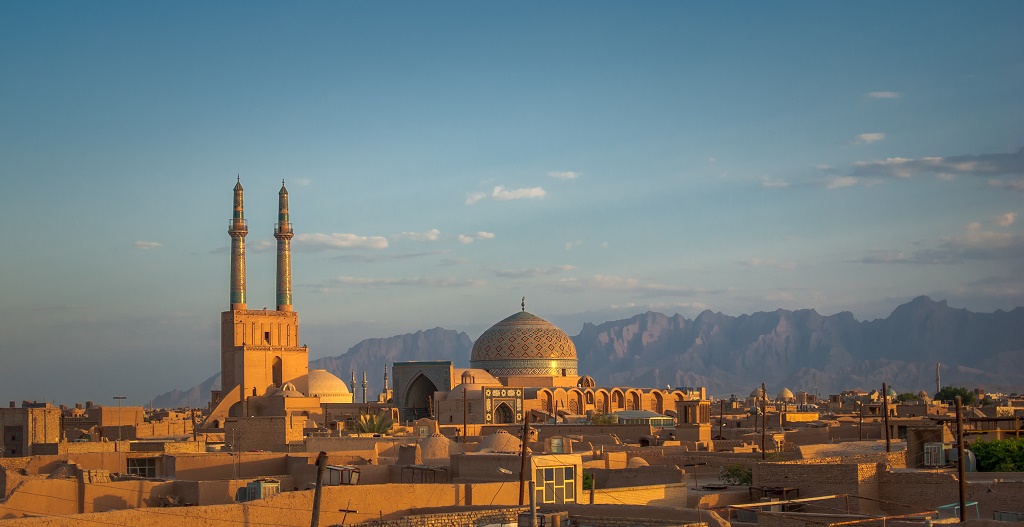
Tower of Silence: Inasmuch as the Zoroastrian refuse to bury or cremate their dead bodies, due to the fact that they believe earth and fire are two sacred elements and they will be defiled by the impurities of human body, the corpses were transferred to the places away from residential areas called „Dakhme” or Tower of Silence to be consumed by scavenging animals.
Yazd Fire Temple: A major Zoroastrian Fire Temple, or „Atashkade”, meaning the House of Fire, where the ever-burning sacred fire is preserved, is in the center of a garden the still-burning fire of which is believed to have been lit non-stop for more than 1500 years. This ancient fire is kept in a chamber away from sunlight around which some rooms have been dedicated to praying.
Old city: An exotic authentic Middle Eastern experience never gets complete if the Old City of Yazd, as one of the oldest cities it the world and the largest urban settlements built completely out of adobe with narrow and labyrinthine alleys, is not visited. Alexander Prison and Boq-e Davazdah Imam (Shirne of Twelve Imam) are also within the walking distance.
Amir Chaqmaq Complex: Famous for its spectacular facade, the complex is composed of bazaar, tekyeh (a mourning venue), mosque, cistern, zurkhaneh, i. e. traditional gym, and local sweet shops. The major highlight in this square is the 3-story facade which has been the portal to the Hosseinieh (a place for holding mourning ceremony for Imam Hossein, the 3rd Shiite Imam). With its three arches and two tall minarets, the structure shines with an orange light when sunset arrives.
Day 05 Isfahan
Early breakfast at the hotel then drive to Isfahan.
En route, stop and visit Meybod, Carevansarai, Pigeon's tower and Ice storage. Continue driving to Isfahan with a short stop in Naein city to visit Naein Jami mosque and ethnography museum.
Arrival Isfahan, check in and installation at your hotel
Overnight at the hotel
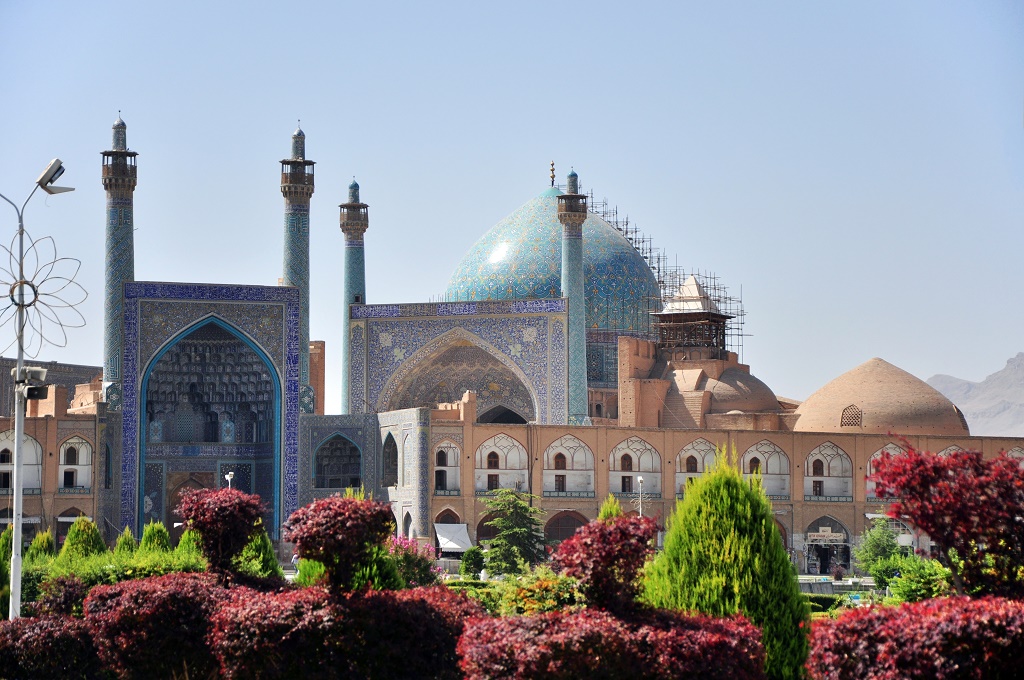
Meybod 70 km away from the city of Yazd, a desert city with mud-brick architecture, Meybod is more than 1800 years old enjoying some historical monuments and significant intangible heritage. Narin Ghaleh, a Sassanian-era castle, the beautiful pigeon tower, huge Safavid caravansary and local handicrafts are to be added to the city attractions, too.
Isfahan „Who can claim to have seen the most beautiful city in the world while has not beheld the city of Isfahan?” André Malraux once said! To enjoy the city of Isfahan, or as the Iranian say „half of the world”, in its entirety, colossal squares, mosques, bridges and bazaars. Madrasa (religious schools) and caravanserais as well as awe-inspiring turquoise domes, tiles works, mugharnas (corbels), carvings, and calligraphy, all in all, are in the must-see list. Isfahan, possessing three UNESCO-registered World Heritage Sites, has maintained its beauty and originally like the three sister-cities of Florence, Barcelona and St. Petersburg. The time tunnel of „Aspehan”, i. e. the old name of the city of Isfahan, haunts the visitors in an Easatern city with the taste of the legends of „one thousand and one nights”. Just stand right in the middle of Nasqh-e Jahan (Image of the World) square to fully experience a mystic aura!
Day 06 Isfahan
Breakfast at the hotel
Departure for a full day city tour in Isfahan: Naghsh – I – Jahan complex (Abbasi mosque, Sheykh Loft Allah mosque, Ali Qapou palace and Qeysariye bazaar), Chehl Sotun palace, Vank cathedral and Armenian corner and finally the Hasht Behesht palace.
Back to the hotel and overnight
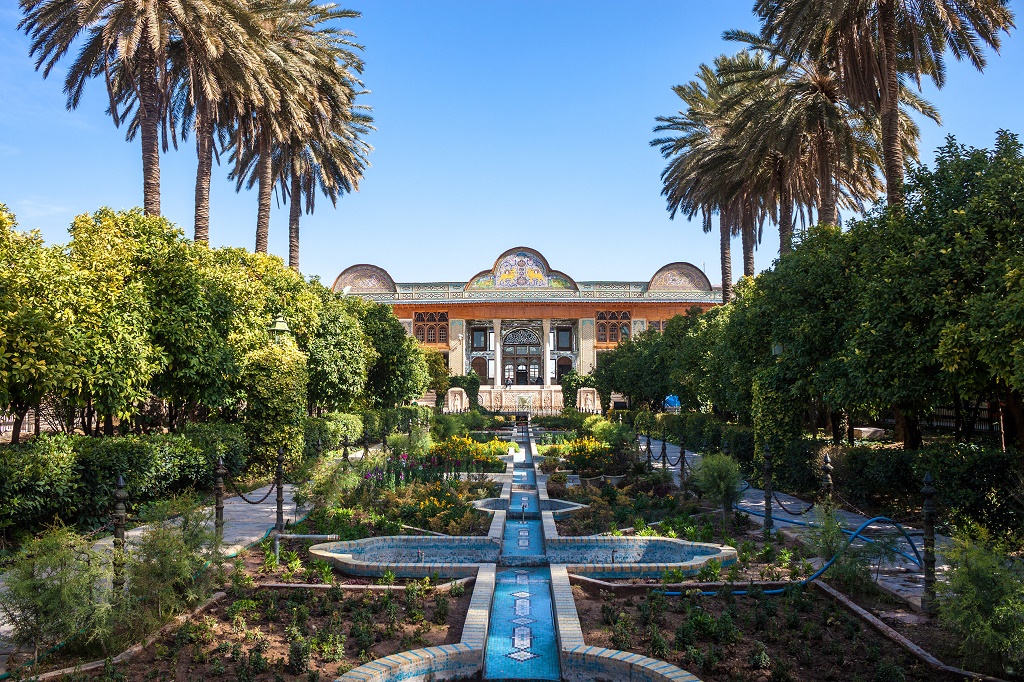
Abbasi Mosque, now Imam Mosque, the most significant monument in Isfahan and one of the most wonderful mosques in the Islamic world, built in the 17th century, is in the South of Nasqsh-e Jahan square. The exquisite design, haft-rangi (7-colored) tilework, and elaborate calligraphy immerse the visitors in pure spirituality.
Sheikh Loftollah Mosque: constructed from 1602 to 1618, named after the famous Shiite cleric. Sheikh Lotfollah Mosque is located in the east wing of Naqsh-e Jahan Square, used to be the private praying place for the royal family. Unlike usual four-iwan mosques, it has no minarets and courtyard and to enter it, one has to climb some steps.
Ali Qapu Palace meaning „Sublime Portal”, situated in the west side of Naqsh-e Jahan Square, served as an entryway to royal palaces and gardens beyond. All Qapu was an elevated terrace fronting the square where Safavid kings and royalties used to sit to behold the events. Chehel Sotoun Palace Pavilion: Just a few-minute walk from Naqsh-e Jahan Square, the beautiful palace was completed during the reign of Shah Abbas II in 1666. With a terrace-like hall with 18 elaborately decorated huge wooden pillars and a mirror hall with two pillars and their image in the large pool in front of the palace. Chehel Sotoun is a home to a stunning collection of frescoes and miniatures.
Day 07 Isfahan
Breakfast at the hotel
Full day city tour in Isfahan: the Armenian area and Vank cathedral, Atigh Jami mosque. Free time for walking through the city or visiting the bazaar.
Back and overnight at the hotel
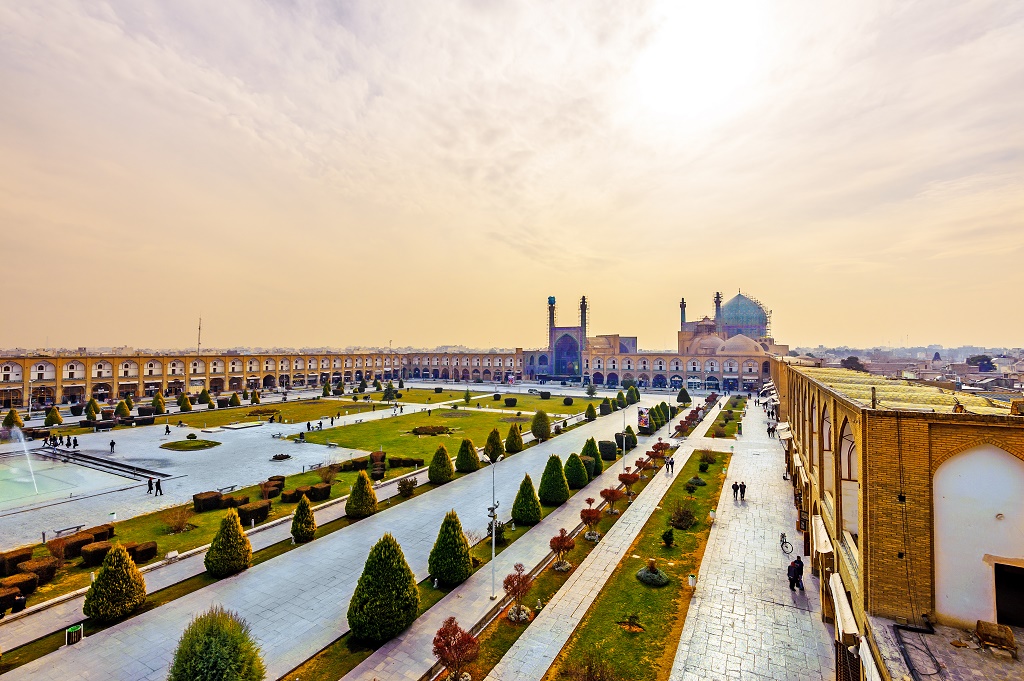
Vank Cathedral: One of the most important Armenian cathedrals in Iran of the 17th century, located in Jolfa district of Isfahan. Vank Cathedral was constructed when Shah Abbas I, the Great, displaced a large number of the Armenian from Northwest of Iran (especially Jolfa, now in East Azerbaijan) to Isfahan. The cathedral enjoys the most amazing frescos depicting some scenes of religious history particularly the life of Jesus Christ as well as a museum with extremely valuable objects like the smallest bibles in the world!
Day 08 Abyaneh / Matin Abad
Breakfast at the hotel then drive to Abyaneh historiacal village, known for its unique and amazing architecture. Noon drive to Matin Abad desert camp. Afternoon walk through the desert sands and sky watching at night
Overnight at Matin Abad desert camp.
Day 09 Tehran
Early breakfast at the camp, then drive to Tehran.
On the way, visit of Kashan city: Boroujerdi old house, Sialk hill and FIN garden.
Arrival Tehran, check in and installation at your hotel
Overnight at the hotel
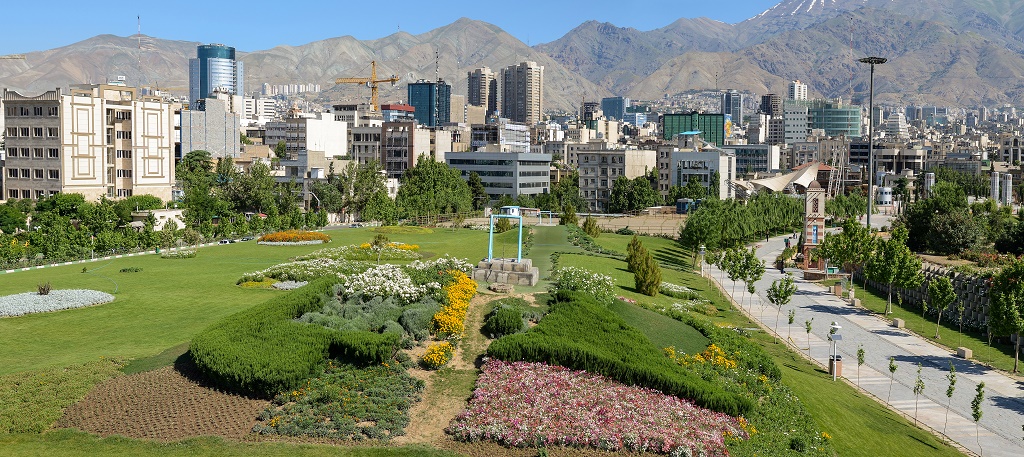
Around 228 years ago, on the first day of the Iranian New Year, the founder of the Qajar dynasty declared Tehran the new capital of the nation. Just a few centuries ago, Tehran was an unknown small village which was not even as large as the city of Rey the name of which has been mentioned in Torah and the age and beauty of which was tantamount to those of Babylonia, but now Rey is a part of greater Tehran, the largest city of Iran. Today, Tehran comprises Qajar-remained ancient neighborhoods and modern high-rise buildings and streets, as well as museums, art galleries, cinemas, palaces, gardens, abbeys, fireplaces, churches, mosques, parks, cafés, hotels, and bazaars.
Day 10 Tehran
Breakfast at the hotel
Proceed with a full day city tour of Tehran: Golestan Palace, the archeological section of the national museum, Crown – Jewels museum, Carpet museum, Milad tower.
Back and overnight at the hotel.

Golestan Palace is the oldest and most magnificent palace of Tehran, dating from 16th century, a UNESCO registered World Heritage Site. Goleastan Palace is located in the downtown close to Tehran Grand Bazaar in the heart of Old Tehran. This palace has been home to many contemporary historic events in Iran such as ratification of first constitution in 1906.
Crown Jewels Museum, as one of the most valuable and most unique museums in the world, founded in 1959. Crown Jewels Museum contains the jewels collections from Iranian former kings and members of the royal families. This priceless collection is a source of support for Iranian money and includes various kinds of jewels the most famous of which are Dary-e Noor (lit. Sea of Light) diamond, Takht-e Tavous (Peacock Throne), Jeweled Globe, Kiani Crown, and Pahlavi Crown.
The Carpet Museum which is home to some of the best Persian Carpets was founded in 1978. Designed like a carpet loom, encompassing 135 marvelous pieces of carpet from various regions of Iran, the museum also is a treasure house for books related to art in Persian, Arabic, English, French, and German languages as well as films on carpet weaving and Persian handicrafts.
Day 11 Tehran
Breakfast at the hotel then proceed for a full day city tour in Tehran: Sa'D Abad palace, Darband mountainous area, Niavaran palace and Tajrish bazaar.
Back and overnight at the hotel.
Day 12 Tabriz
After breakfast at the hotel, drive to Tabriz. On the way, visit of the tomb of Oljaito through the way in Soltaniye city (Soltaniye dome). Check in and installation at your hotel
Overnight at the hotel in Tabriz.
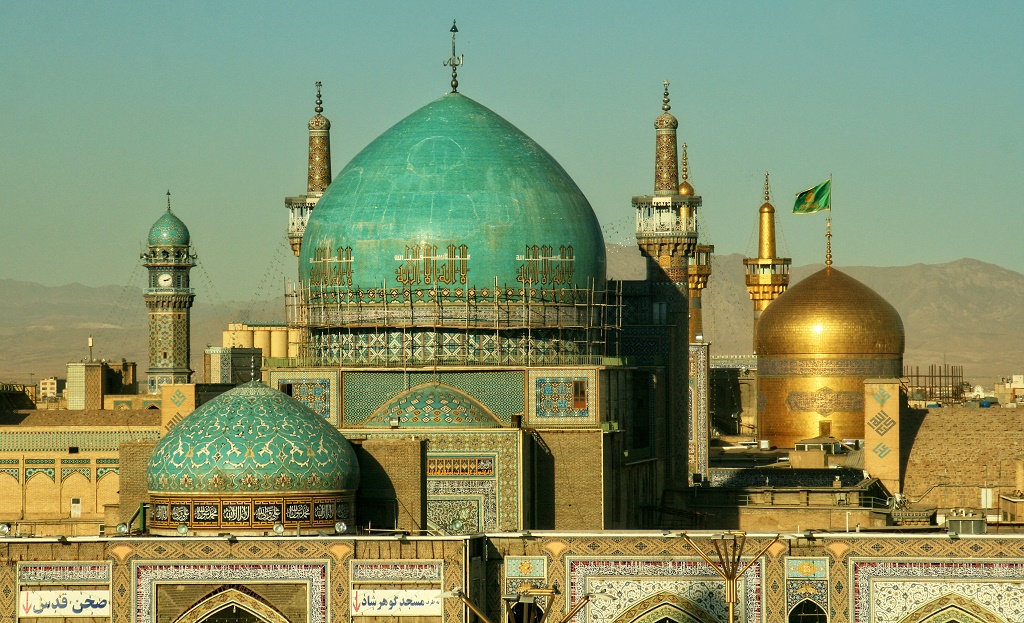
Tabriz, located on the main route of the Silk Road, used to be the center for trading in the ancient time and has one of the largest covered bazaars in the world which has been registered as the first bazaar among the World Heritage Sites. The city has been the capital city of Iran over different periods and it is the city of some of the firsts in Iran. The city also boasts its eloquent poets, epics and unforgettable national heroes as well as food and traditional sweet. Tabriz is the main city of East Azerbaijan province and is home to Azeri (Turkish) speaking people.
Day 13 Tabriz
After breakfast at the hotel, proceed for a full day city tour in Tabriz: Azerbayjan museum, Iron age museum, Blue mosque, Constitutional house, Tabriz bazaar and El-Goli park and lake.
Back to the hotel and overnight.
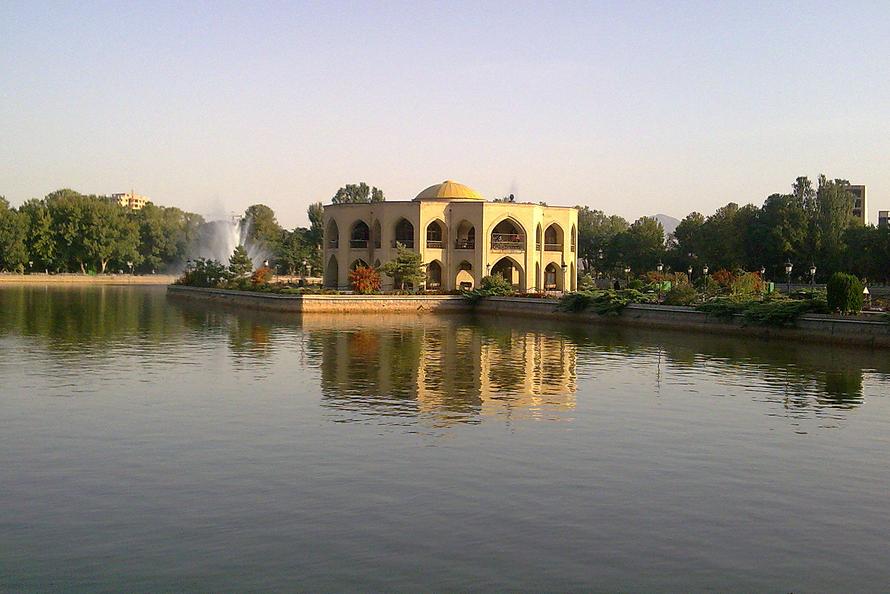
Azerbaijan Museum: The second most important archeological museum in Iran, Azerbaijan Museum was designed by Andre Godard, the French archeologist and architect around 80 years ago. The museum is home to objects from pre-Islamic and Islamic era as well as the findings belonging to pre-historical and ancient Iran, some of which are of 7000 years ago. In addition to coins from Achaemenid era to the Qajar period, contemporary statues are also showcased in this museum.
El-Goli Park: A historical park, a popular venue for strolling and socialization, El-Goli features nature, culture, and history in one frame. Formerly a royal residence, the park comprises a peninsular mansion and a beautiful lake.
Blue Mosque: Built upon the order of Sultan Jahan Shah, very famous for its blue tiles. The Blue Mosque (Majed-e Kabud) was completed in 1465-1466). At its heyday, the mosque also included a school, a hammam, a bazaar, but due to several severe earthquakes, they no longer exist. Owing to variety and subtlety of its blue tiles, this magnificent mosque is called the Turquoise of Islam.
One of the oldest bazaars in the Middle East, the largest covered bazaar in the world, the Grand Bazaar of Tabriz used to be one of the most important commercial centers on the Silk Road. As an epitome of a venue for trade and commerce in Iran, the old bazaar has been registered as a World Heritage Site by UNESCO.
Constitution Hous of Tabriz, or Khan-eyeh Mashroute, is a historic house built in 1868 in two floors and 1300 sqm. In the west of Tabriz Grand Bazaar, opposite the Jame Mosque, and in the old part of the city, the house was the commanding headquarters of the constitutional movement of the people of Tabriz. Furthermore, the democratic party of Azerbaijan which sought independence from central government, from 1945 to 1947, used this house as a place to hold their meetings.
Day 14 Tabriz
After breakfast at the hotel, check out and transfer departure to the airport.
Including:
- Accommodation at different hotels on bed and open buffet breakfast basis
- All transportation by air-condition motor coaches or minibuses
- All entrance fees for visiting places listed on the itinerary
- Mid-day refreshment
- English speaking tour guide or Hungarian speaking guied as a supplement will be added